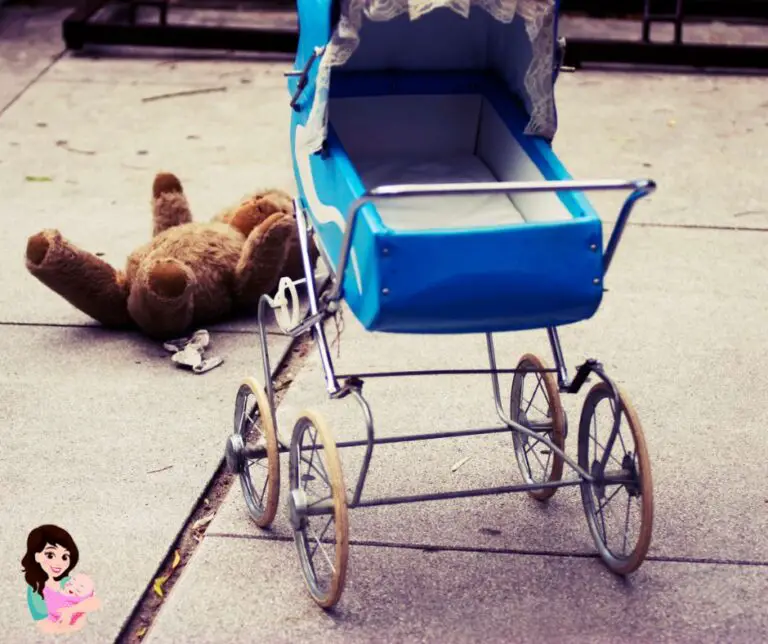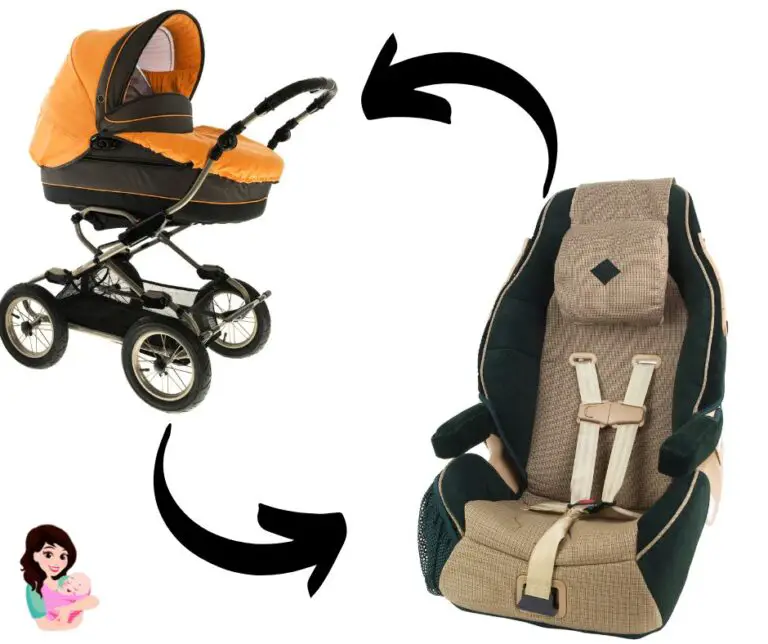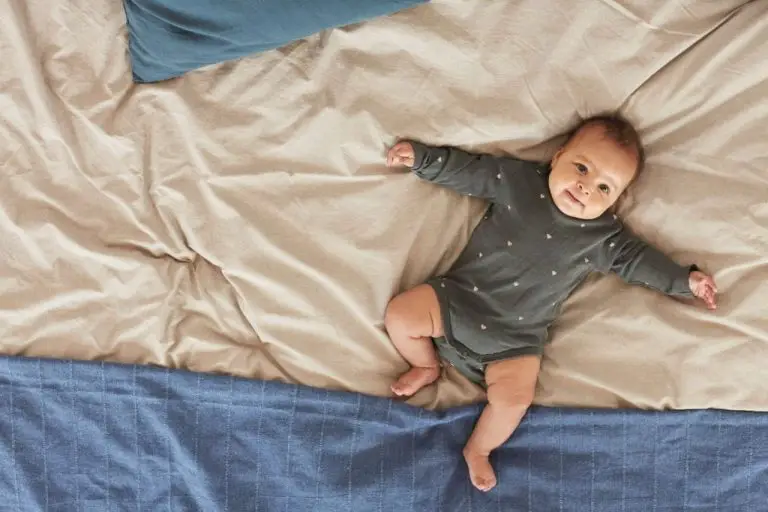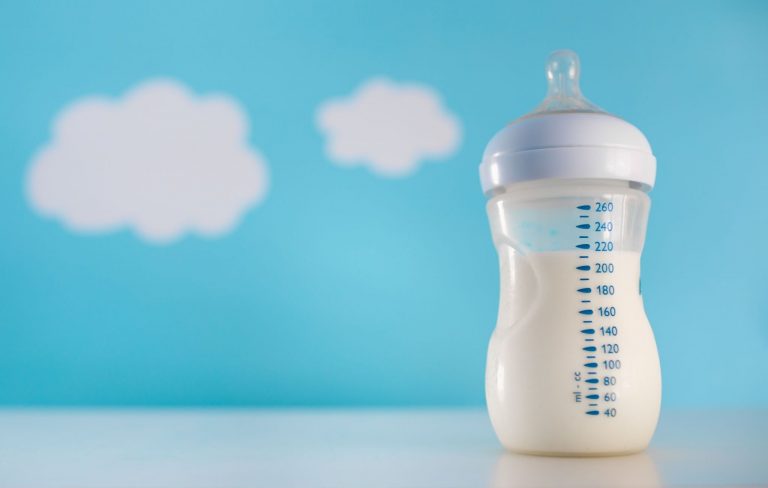
A backpack carrier can be a lifesaver if you’re an avid hiker or camper or just enjoy the great outdoors. Not only can it help you move and explore more of nature with your little one, but it can also help to develop a real bond between you and your baby.
Every little thing feels like a big deal when you’re a new parent. You’re going to want to do your best to keep your baby safe and comfortable at all times, which is why it’s important that you know when it’s appropriate for them to use a backpack carrier.
When Can Baby Go In Backpack Carrier?
The answer is not as straightforward as you might think. The best time to use a backpack carrier is when your baby can sit up unassisted and has good head and neck control, usually around the 6-month mark.

When it comes to babies’ physical development, they tend to crawl between 5 and 7 months old. This means that if your child isn’t crawling yet or only does so for a few steps before falling over on their backside each time, then it’s likely that they’re not ready for a backpack carrier.
Emotional development allows us to gauge how well our children understand their surroundings and handle interactions with others. If your little one seems overwhelmed by anything, even something as simple as holding hands on a walk, then it may be best to wait until she or he feels more comfortable being out in public before using a backpack carrier full-time.
What to Know Before Placing a Baby in a Backpack Carrier
There are several things to consider before placing your baby in a backpack carrier:
Your baby has to be able to sit up unassisted
This is the most important thing to consider. Your baby should be able to hold up his or her head and sit without support for extended periods of time. This means that your child has developed good muscle strength in their neck and back, enabling them to hold up their own head long enough. Your child should also be able to sit independently without having anyone hold him/her upright and without falling over or leaning too far forward.
Has good head and neck control
The second thing to consider is whether your baby has good head and neck control. If the answer is no, then it’s not time for you to use a backpack carrier. Your baby should be able to hold his or her head up without falling forward or backward. If he or she can’t do that yet, it can be unsafe for him/her to use a backpack carrier because there will be an increased risk of injury from falls and bumps in the road when you’re moving around with your child in this type of gear.
Baby’s weight mustn’t exceed that specified for your carrier
When choosing a backpack carrier, pay attention to the weight limit. The majority of carriers have a maximum weight capacity of 35-40 lbs. This means it’s time to ditch the pack and transition into something else after your child reaches this limit.
Types of Backpack Carriers for Babies
There are two types of backpack carriers for babies:
Framed carriers
Framed carriers are designed to hold your baby and distribute their weight evenly across your body. They’re built with strong aluminum frames that can withstand years of wear, and many have extra storage space in the form of pouches or pockets where you can store water bottles, snacks, and even diapers on multi-day hikes.
Some heavy-duty carriers like this one are so rugged they come with removable pouches so you can choose how much gear you want to schlep around on any particular trip. No matter which type of backpack carrier you choose for your next outdoor adventure with the baby in tow, make sure not to exceed the maximum weight limit specified by the manufacturer.
Lightweight or “Urban” carriers
Lightweight carriers are usually designed for babies who can sit up unassisted (6 months old) and have good head control. Many come with removable hoods and sunshades, which is a nice feature if you live in sunny areas. The straps on lightweight carriers are also more adjustable so if your child grows quickly, this should help maintain their comfort level during long trips.
These carriers are great for everyday use, or for travel. They have the same weight distribution as the carrier you’ll be using with your baby, but they’re lighter and more compact than other options.
Backpack Requirements for Babies
The baby must be able to hold their head up unassisted, sit up unassisted, and have good head and neck control to use a backpack. That said, here are some things your backpack should also provide to help your baby have a smooth ride in it:
Allows healthy hip positioning for your baby
You want to make sure that your baby’s hips are positioned at a 90-degree angle, or spread apart. This helps encourage healthy hip development and can prevent hip dysplasia. If this happens when they are young, it may result in permanent damage to their hips.
Your baby carrier should allow your baby’s legs to straddle your body so that his/her feet are resting on either side of you, with his/her knees spread out and thighs supported by the seat of the carrier.
Comfortable for you to wear and your baby to sit in
The backpack carrier should be comfortable enough for you and your baby to wear for a long time. The straps should not dig into your skin, and they should distribute the weight evenly across your shoulders. If it’s too heavy, that can cause back pain later on. And if it’s too hot or cold, it may make you uncomfortable.
It’s also important that the carrier is comfortable for your baby to sit in. Make sure there are enough cushions or pads so they don’t get sore from sitting on hard surfaces all day long. You’ll want something soft enough so they feel safe inside but also sturdy enough not to fall apart after just one use.
Weather-suitable
Before you think about buying a baby carrier, you need to consider where and when you plan on using it. If your plans include hiking in the snow, for example, make sure that your carrier is weatherproof.
Likewise, if you are going to be hiking in the rain and want protection from water coming through zippers or seams, make sure that your carrier is waterproof as well. Similarly, if you live where there is a lot of sun exposure, then look for a UV-resistant material like nylon or polyester instead of cotton.
Conclusion
There are some things that you need to consider before using a backpack carrier for your baby. You should know how much weight the baby can carry at different ages. Also, it is important to know how long your child will be carried in a backpack before they start walking on their own. In the end, the age your baby begins to use a backpack carrier is dependent on how well the child has developed.

Hi, This is Emma Baster; As a mom, I spend my free time caring for my kids. I’ve read a lot on the Internet to improve my childcare skill and bring the best to my kids. Eruditemommy shares my knowledge and experience through helpful posts. I hope you enjoy them!







